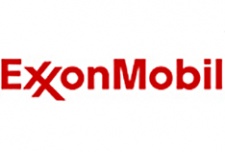UPDATE: S&P Downgrades to ExxonMobil (XOM) to 'AA+'; Notes Impact of Low Commodity Prices

Get Alerts XOM Hot Sheet
Overall Analyst Rating:
NEUTRAL (
 Up)
Up)Dividend Yield: 3.2%
EPS Growth %: -22.6%
Join SI Premium – FREE
On April 25, 2016, Standard & Poor's Ratings Services lowered its corporate credit and long-term debt ratings on Exxon Mobil Corp. (NYSE: XOM) to 'AA+' from 'AAA'. In addition, we are removing the ratings from CreditWatch where we placed them with negative implications on Feb. 2, 2016. The short-term corporate credit rating remains 'A-1+'. The outlook is stable.
We believe Exxon Mobil's credit measures will be weak for our expectations for a 'AAA' rating due, in part, to low commodity prices, high reinvestment requirements, and large dividend payments. The company's debt level has more than doubled in recent years, reflecting high capital spending on major projects in a high commodity price environment and dividends and share repurchases that substantially exceeded internally generated cash flow. Exxon Mobil has reduced capital spending sharply, and will likely benefit from near-term production gains as major projects reach completion. Despite the favorable effect of lower service costs and improved efficiencies, we believe that maintaining production and replacing reserves will eventually require higher spending. As a result, we expect leverage to remain weaker than levels consistent with a 'AAA' rating, and we believe that lowering ratings to 'AA+' is appropriate. Furthermore, we believe the company may return cash to shareholders rather than building cash or reducing debt, limiting improvement in our projected credit measures when commodity prices improve.
The stable outlook reflects our expectation that Exxon Mobil Corp. will continue to follow moderate financial policies of low leverage and responsible capital stewardship. This expectation includes FFO to debt above 60% and debt to EBITDA below 1.5x.
Based on Exxon Mobil's role as a very large, well-capitalized industry leader, we expect the company to continue to undertake large-scale, long-lead-time projects in politically challenging environments and to periodically make large acquisitions. The company's very long history of making large investments and acquisitions in a fiscally prudent manner is a positive rating factor for its credit quality.
We could lower ratings if the company were not able to adjust costs and spending adequately during a period of sustained low commodity prices, if the company pursued a large leveraging acquisition without a plan to improve credit measures, or if the company returned cash to shareholders beyond internally generated cash flow on a sustained basis. Such scenarios would likely result in credit measures that would weaken significantly without a clear path to improvement, such that FFO/debt would remain below 60% and debt/EBITDA would remain above 1.5x.
We could consider raising the ratings if management demonstrated commitment to financial policies consistent with our expectations for a minimal financial risk. These include using discretionary cash flow to reduce debt significantly when oil and gas prices recover from current levels, and commitment to maintaining very conservative credit measures including FFO/debt above 60%, debt/EBITDA below 1.5x, FOCF to debt in excess of 40% and DCF to debt in excess of 25% on a consistent basis.
Serious News for Serious Traders! Try StreetInsider.com Premium Free!
You May Also Be Interested In
- ExxonMobil (XOM) PT Raised to $145 at Piper Sandler
- Wells Fargo Reiterates Overweight Rating on Tapestry Inc. (TPR)
- Rivian Automotive (RIVN) target cut at Barclays
Create E-mail Alert Related Categories
Credit RatingsRelated Entities
Standard & Poor's, Definitive AgreementSign up for StreetInsider Free!
Receive full access to all new and archived articles, unlimited portfolio tracking, e-mail alerts, custom newswires and RSS feeds - and more!



 Tweet
Tweet Share
Share